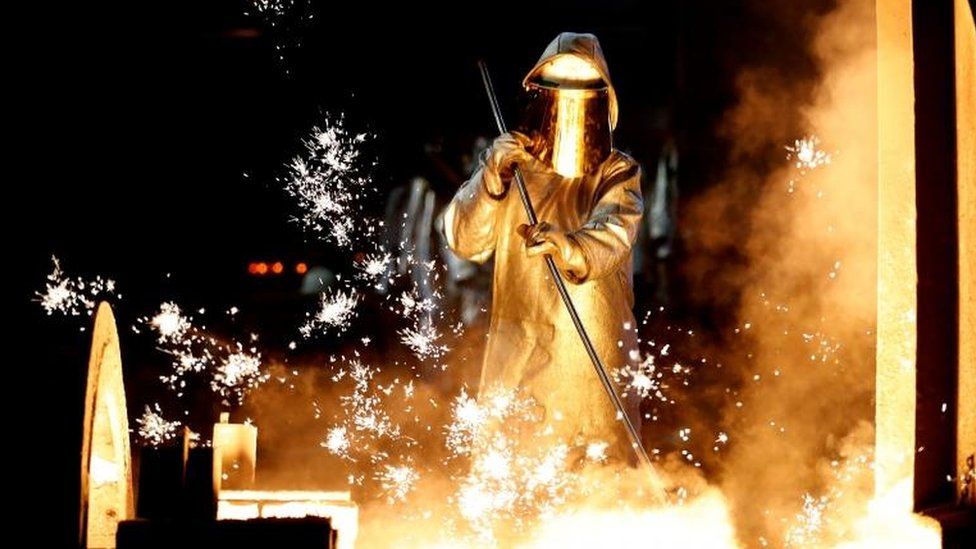European Union grows at fastest pace for 10 years
- Published
- comments

The European Union economy grew at its fastest pace in a decade last year, figures from the EU statistics office Eurostat have confirmed.
The 28-strong EU expanded by 2.5% in 2017, its strongest performance since 2007, when it grew by 2.7%.
In the final three months both the EU and the 19-nation eurozone grew by 0.6% compared with the previous quarter.
That was mirrored by growth in the EU's biggest economy, Germany, which grew by 0.6% in the final quarter of 2017.
France also expanded by 0.6%, while Spanish growth was a notch stronger at 0.7%.
Overall in 2017, the eurozone grew by 2.5%, Eurostat said, the fastest growth rate since a 3% rise in 2007.
These latest figures confirm the flash estimates published by Eurostat at the end of January, which were based on more limited data.
Investec economist Ryan Djajasaputra said much of the growth last year had been driven by the eurozone's core four economies: Germany, France, Italy and Spain.
However, Eastern European economies, including Latvia and Slovakia, were growing "particularly fast", he added.
He attributed the strength of the eurozone to the European Central Bank's (ECB) stimulus policies, which have brought down the cost of borrowing in recent years.
In addition, he said confidence had been hitting record levels since the crisis years in the eurozone and unemployment was down to pre-crisis levels.
'Headwinds'
Sarah Hewin, chief economist Europe at Standard Chartered, said: "Activity is being supported by strong global growth, which is helping European exporters.
"In terms of domestic factors, rising wages, low inflation and record-level employment are driving consumer spending; meanwhile, investment is rising, helped by strong corporate profitability and buoyant confidence."
However, while she expected eurozone economic growth to stay strong, "higher energy prices and a stronger euro may be headwinds to growth this year".
Standard Chartered is forecasting eurozone growth of 2.2% in 2018 and 2% in 2019.
"On the political front, uncertainty may build around Italy's general election next month; and if the UK leaves the EU without a transition arrangement, that could undermine euro-area exports next year," added Ms Hewin.
Helene Baudchon of BNP Paribas says the whole eurozone is enjoying a similar positive growth momentum
KPMG chief economist Yael Selfin said the figures confirmed the "continuation of strong growth momentum in [the] eurozone, helped by generous support from the European Central Bank and a more pro-growth political drive in some of its main economies.
"While there is probably still significant room for the ECB before it starts tightening its monetary policy, a further pick-up in activity could see a more accelerated scale back of its quantitative easing programme," she added.
Analysis: By Kamal Ahmed, economics editor
After many false dawns, at last some sunlight has fallen on Europe's strongest economies.
Growth across the European Union is at levels not seen since 2007.
And the continent's powerhouse countries - Germany and France - are seeing growth at levels not experienced since the financial crisis bounce-back of 2010.
Those were the good old days, when many believed that the worst of the financial crisis was already behind us.
The bounce, sadly, was what markets describe as a "dead cat". That is, not going anywhere positive.
After the false dawn of 2010, there followed years of economic calamity as the financial crisis morphed into a currency crisis and the economic collapse of Europe's smaller, indebted economies, led by Greece and infecting Portugal and Ireland, as well as Spain.
Read Kamal's full blog here
- Published14 February 2018
- Published30 January 2018
- Published9 January 2018
- Published14 December 2017
- Published31 October 2017